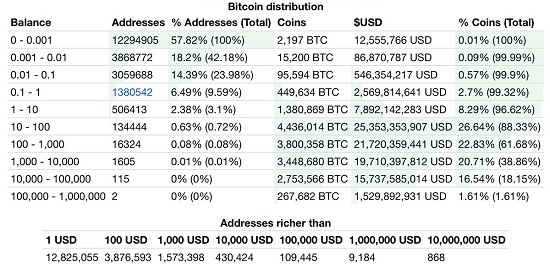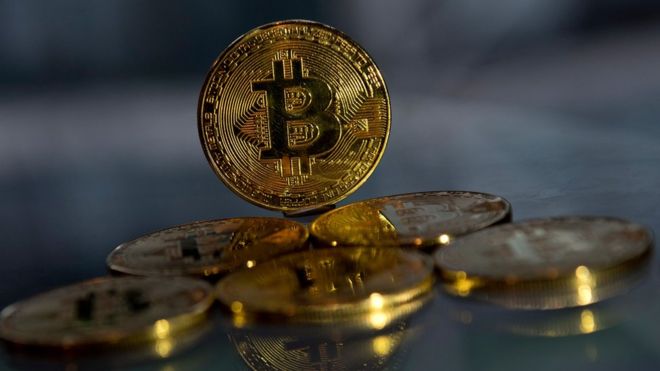If the ownership of bitcoin is as concentrated as some estimate, then the liquidity issue distills down to the actions of the top tier of owners.
Whenever I raise the topic of bitcoin and cryptocurrencies, I feel like an agnostic in the 30 Years War between Catholics and Protestants. There is precious little neutral ground in the crypto-is-a-bubble battle; one side is absolutely confident that bitcoin and the other cryptocurrencies are in a tulip-bulb type bubble, while the other camp is equally confident that we ain’t seen nuthin’ yet in terms of bitcoin’s future valuation.
I’ve stated here more than once that in my view the real value of bitcoin will only be revealed in a financial/market crisis/crash like 2008-09. Longtime correspondent Mark G. recently proposed three tests that illuminate some of the dynamics that might come into play in the next financial/market crash/crisis.
(CHS NOTE: gold fell from a peak around $1,100 per ounce in March 2008 to $830 in October 2008. It then bounced back to $1,100 in February 2008. The standard explanation for the sharp decline was that gold was sold off to meet margin calls and other obligations arising from the Global Financial Meltdown of late 2008. That gold was perceived as a reliable store of value may have increased its attractiveness as an asset to sell in the mad scramble to raise cash.)
Here is Mark’s commentary:
I propose that the performance of gold in 2008-2009 offers an indicator into how bitcoin is likely to behave.
I propose three practical tests for bitcoin.
Test 1. Is it possible to meet any sort of ‘margin call’ using bitcoin directly? Is it possible to do so on a large enough scale to affect market liquidity in any particular market? i.e. are any margin loans or the functional equivalent thereof denominated in bitcoin? In 2008 as “margin calls” flowed in from everywhere, all speculative assets experienced the same selling pressure to raise cash to meet obligations denominated in “money”.
Test 2. Can the physical necessities of daily life be commonly paid for directly and locally using bitcoin? I mean things like food, fuel, medicine, clothing and local debts for utilities, taxes, rents and mortgages. Or is it necessary to first exchange one’s bitcoin for ‘legal tender’ to conduct these transactions?
Test 3. Can bitcoin even be used to financially sustain bitcoin’s minimum physical infrastructure of servers, brokers and trading desks? Can it pay leases, electric bills and purchase the servers required for this?
Are there any lenders of “last resort” ready, willing and able to sustain bitcoin banks, traders and speculators? If not, and precisely because there is a limited supply of bitcoin, it seems a certainty that the financial failures previously seen in the decades prior to the Federal Reserve Act are likely to recur in the bitcoin infrastructure for precisely the same reason: liquidity crunches appearing.
These are precisely the tests that gold and silver failed in 2008/2009. And until bitcoin is ready to pass these tests I think it too will collapse in any future Global Financial Crisis.
Source/More: oftwominds-Charles Hugh Smith: How Will Bitcoin React in a Financial Crisis Like 2008?














